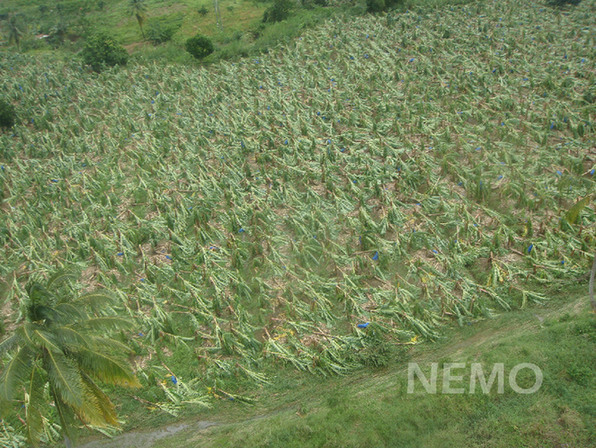Hurricane Tomas slowly batters St. Lucia
Five persons dead and many injured; countless homes destroyed or badly damaged; roads covered by fallen trees, boulders and earth; bridges washed away; towns and villages rendered inaccessible; massive landslides island-wide; electricity and communications cut; clean water in short supply; and growing concerns about possible health hazards.
 |
|
A banana plantation laid to waste in St. Lucia by Tomas' strong winds. [NEMO] |
Tomas arrived on October 31 – during the annual Caribbean hurricane season – and affected several islands, including Barbados, Dominica, Martinique, St. Lucia and St. Vincent and the Grenadines; however, initial reports by regional assessment teams are that St. Lucia was the worst hit.
Five persons were killed in the West Coast town of Soufriere, the island's tourism capital, by landslides that made the home town of the famous World Heritage Site, The Pitons, totally inaccessible by road and only approachable by sea and air.
Soufriere has so far been declared the worst affected area and it remains cut off from its neighboring coastal villages, Choiseul and Canaries.
Efforts continue to restore power, but the popular tourist destination town is expected to remain cut off from the rest of the country for some time yet.
One day after the "all clear" was issued by the Met Office, the island is in damage assessment and response mode.
The National Emergency Management Office (NEMO) says aerial reconnaissance flights revealed large areas affected by swollen rivers, landslides from excessive rainfall and damage from high winds.
Initial reports from District Disaster Committees (DDCs) indicated that all parts of the 616 square kilometer island of 160,000 inhabitants were affected by the hurricane.
They also reported structural damage to the island's road network from north to south, east to west.
 0
0 







Go to Forum >>0 Comments